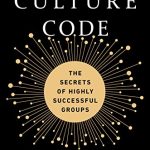So Thought leaders read and thought-leaders are people who share their knowledge with others in order to help them solve problems they may be experiencing. If you want to become a thought leader, here’s some suggested steps.
3 suggested steps in becoming a thought reader:
1) Find out what your expertise is
2) Read and learn about topics related to your expertise
3) Share what you’ve learned with the world by writing articles, giving talks, and publishing books.
One noticeable habit of thought leaders is, Thought leaders read.
Here are some reasons why you should read as well:
- It will help you become smarter and more knowledgeable
- You can learn about new things that relate to your expertise – making you an even better thinker
- It will help you set goals, giving your life more meaning
- It will help you become a better leader
You’ll be able to learn about how other people solved problems that are similar to what you’re experiencing – making it easier for you solve them on your own. Who knows? You may even discover new ways of doing things!
Confirm Your Expertise
What does it mean to be a thought leader? Find out by becoming one yourself! Read, read and read some more to find your expertise in books, and when you feel confident enough about what you are reading, share the knowledge with others through. You can do this though writing or keynote speaking whether publically or privately. You know how powerful books are because of their ability to transform lives when shared properly—and if they have transformed yours then pay it forward by being an inspiration for someone else today! Reading is good but turning those words into actions is even better.
Books that can help you be a Thought Leader.
Enhancing self-awareness
Leadership starts with self-awareness – knowing who you are, your strengths and limitations. These three books will help make this foundation strong by exploring mind patterns and biases that block effective leadership; dispelling myths about charisma and how it relates to being a good leader; understanding that complexities of leadership, success and failure are not black-and-white.
Grit: The Power of Passion and Perseverance by Angela Duckworth is a great read for those transitioning from a successful career track into the world of entrepreneurship or going out on their own as an independent consultant with no one but themselves to rely on. This book takes a look at what really drives success. Most people would say they want to be successful because they want more money, more power, more fame, etc., but Angela is quick to point out that all of these factors don’t always come along with success – in fact, sometimes they seem completely unrelated! What she does believe is at the heart of success are two things: passion and perseverance. Passion is when you are very interested in something. You are driven by your interest, even when things get hard. Perseverance means that when faced with failure or difficulty, you keep going! You maintain discipline and don’t give up. If you’re looking for more motivation in your entrepreneurial journey, this book will give you an inspirational kick-in-the-pants to make it happen!
The Charisma Myth by Olivia Fox Cabane shows us how charisma – often seen as an innate quality possessed by only “a chosen few” – can be learned. We meet people every day who have high levels of natural charisma, but also realize that not everyone possesses it.
Charisma’s 3 distinct traits:
- presence. Presence involves focusing on the person who you are talking to, making eye contact and truly listening to them rather than thinking about what you are going to say next.
- power. Power means that once you have another person’s attention, your job is not over! Because after gaining someone’s attention it’s all too easy for them to drift off! Keep people engaged by using gestures, telling stories, asking questions and sharing anecdotes.
- warmth. Warmth can be generated through friendliness, playfulness or being interested in others – often referred to as “active” vs. “passive” interest. Asking what someone would like to do next weekend shows that you are interested in them specifically while saying “It was nice talking to you” is more passive showing that it’s time for the conversation to end.
The Culture Code: The Secrets of Highly Successful Groups by Daniel Coyle explores the common ground found in every great team and company. It is not what we may think (clothes, titles, age) but rather how we interact with one another (honoring commitments; listening; holding people accountable). This book helps us see how fostering authentic relationships makes our organizations stronger and generates trust among everyone involved. Coyle’s book is a great reminder of how team interactions have the power to make or break our organizations, and how we can all improve these interactions.
Thought leaders read, become one today!
There you have it! Three more suggestions on what to read next! What books have influenced your leadership skills? Please feel free to share with us in the comments section below. Thanks for reading!!
Found this article useful? Kindly share this post as many times as necessary to show your support and encourage us to provide more contents like this. Thank you. 🙂




